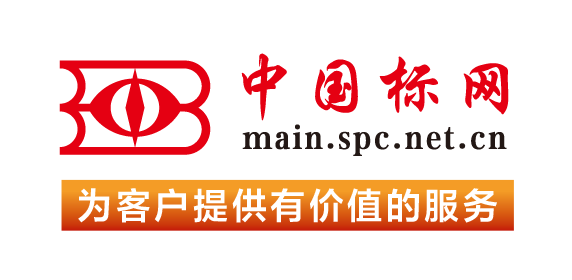1.1 This classification system covers requirements for cellulose acetate thermoplastic compounds plasticized with either diethyl phthalate or dimethyl phthalate and are suitable for injection molding and extrusion. These compounds have an acetyl content between 39 and 40 %. It does not include materials compounded for special application. Cellulosic plastic materials, being thermoplastic, are reprocessable and recyclable. This classification system allows for the use of those cellulosic materials, provided that all specific requirements of this classification system are met.1.2 The properties included in this classification system are those required to identify the compositions covered. Other requirements necessary to identify particular characteristics important to specialized applications are specified by using the suffixes as given in Section 5.1.3 This classification system and subsequent line call out (specification) are intended to provide a means of calling out plastic materials used in the fabrication of end items or parts. It is not intended for the selection of materials. Material selection can be made by those having expertise in the plastic field only after careful consideration of the design and performance required of the part, environment to which it will be exposed, fabrication process to be employed, costs involved, and inherent properties of the material other than those covered by this classification system.1.4 The values stated in SI units are to be regarded as standard.1.5 The following safety hazards caveat pertains only to the test method portion, Section 11, of this classification system. This standard does not purport to address all of the safety concerns, if any, associated with its use. It is the responsibility of the user of this standard to establish appropriate safety, health, and environmental practices and determine the applicability of regulatory limitations prior to use.NOTE 1: There is no known ISO equivalent to this standard.1.6 This international standard was developed in accordance with internationally recognized principles on standardization established in the Decision on Principles for the Development of International Standards, Guides and Recommendations issued by the World Trade Organization Technical Barriers to Trade (TBT) Committee.
定价: 590元 / 折扣价: 502 元 加购物车
This specification covers requirements for plasticized cellulose acetate butyrate thermoplastic compounds suitable for injection molding and extrusion. These compounds have a butyryl content less than 38 % and an acetyl content less than 15 % and may or may not contain dyes and pigments. This specification does not include special materials compounded for special applications. Cellulosic plastic materials, being thermoplastic, are reprocessable and recyclable. This specification allows for the use of those cellulosic materials, provided that all specific requirements of this specification are met. Test specimens of the thermoplastic compounds shall conform to the prescribed specific gravity, tensile stress at yield, flexural modulus, Izod impact strength, water absorption and weight loss on heating. The materials shall also be subject to color-visual, color-quantitative, and plasticizer content analysis.1.1 This classification system covers requirements for plasticized cellulose acetate butyrate thermoplastic compounds suitable for injection molding and extrusion. These compounds have a butyryl content less than 38 % and an acetyl content less than 15 % and can contain dyes and pigments. This classification system does not include special materials compounded for special applications. Cellulosic plastic materials, being thermoplastic, are reprocessable and recyclable. This classification system allows for the use of those cellulosic materials, provided that all specific requirements of this classification system are met.1.2 The properties included in this classification system are those required to identify the compositions covered. Other requirements necessary to identify particular characteristics important to specialized applications are specified by using the suffixes as given in Section 5.1.3 This classification system and subsequent line call out (specification) are intended to provide a means of calling out plastic materials used in the fabrication of end items or parts. It is not intended for the selection of materials. Material selection can be made by those having expertise in the plastic field only after careful consideration of the design and performance required of the part, environment to which it will be exposed, fabrication process to be employed, costs involved, and inherent properties of the material other than those covered by this classification system.1.4 The values stated in SI units are to be regarded as standard.1.5 The following safety hazards caveat pertains only to the test method portion, Section 12, of this classification system. This standard does not purport to address all of the safety concerns, if any, associated with its use. It is the responsibility of the user of this standard to establish appropriate safety, health, and environmental practices and determine the applicability of regulatory limitations prior to use.NOTE 1: There is no known ISO equivalent to this standard.1.6 This international standard was developed in accordance with internationally recognized principles on standardization established in the Decision on Principles for the Development of International Standards, Guides and Recommendations issued by the World Trade Organization Technical Barriers to Trade (TBT) Committee.
定价: 590元 / 折扣价: 502 元 加购物车
7.1 Ash content gives an estimate of the inorganic content of cellulose ester samples. The presence of high levels of inorganic content (ash) can be detrimental to the melt stability and optical clarity of a cellulose ester in melt processing or act as a potential source of insolubles when the ester is used in solution.1.1 These test methods cover procedures for the testing of cellulose acetate propionates and acetate butyrates. These esters may vary widely in composition and properties, so certain of the procedures can be used only in the ranges of composition where they are suitable.1.2 The values stated in SI units are to be regarded as the standard. The values given in parentheses are for information only.1.3 The test procedures appear in the following sections: SectionsAcetyl Propionyl or Butyryl Contents 28 – 37Acetyl Content, Apparent 18 – 27Acidity, Free 12 – 17Ash 7 – 10Color and Haze 77 – 81Heat Stability 57 – 65Hydroxyl Content 38 – 44Hydroxyl Content, Primary 46 – 50Intrinsic Viscosity 67 – 71Moisture Content 5-6Sulfur or Sulfate Content 51 – 56Viscosity 74-75Limiting Viscosity Number 67 – 711.4 This standard does not purport to address all of the safety concerns, if any, associated with its use. It is the responsibility of the user of this standard to establish appropriate safety, health, and environmental practices and determine the applicability of regulatory limitations prior to use.1.5 This international standard was developed in accordance with internationally recognized principles on standardization established in the Decision on Principles for the Development of International Standards, Guides and Recommendations issued by the World Trade Organization Technical Barriers to Trade (TBT) Committee.
定价: 646元 / 折扣价: 550 元 加购物车
4.1 Moisture content of the cellulose ester can be used to estimate the dry weight of the cellulose ester. Since cellulose esters are desiccants, their moisture content can vary greatly depending on storage.1.1 These test methods cover procedures for testing cellulose acetate.1.2 The test procedures appear in the following sections: SectionsAsh 8 to 11Color and Haze 67 to 72Combined Acetyl or Acetic Acid Content Test Method A. Solution Method 17, 19 to 23 Test Method B. Heterogeneous Saponification Method 17, 24 to 26Free Acidity 12 to 16Heat Stability 47 to 56Hydroxyl Content 27 to 33Intrinsic Viscosity 57 to 62Moisture Content 4 to 7Primary Hydroxyl Content 34 to 39Sulfur or Sulfate Content 40 to 45Viscosity 63 to 661.3 The values stated in SI units are to be regarded as the standard. The values given in parentheses are for information only.1.4 This standard does not purport to address all of the safety concerns, if any, associated with its use. It is the responsibility of the user of this standard to establish appropriate safety, health, and environmental practices and determine the applicability of regulatory limitations prior to use.1.5 This international standard was developed in accordance with internationally recognized principles on standardization established in the Decision on Principles for the Development of International Standards, Guides and Recommendations issued by the World Trade Organization Technical Barriers to Trade (TBT) Committee.
定价: 646元 / 折扣价: 550 元 加购物车
This specification covers vinyl acetate. The vinyl acetate shall conform to the requirements specified for: (1) distillation range, (2) apparent specific gravity, (3) Pt-Co scale color (for HQ grade only), (4) water content, (5) acetaldehyde content, (6) acidity (weight percentage of acetic acid), and (7) inhibitor content. The sampling and test methods to determine conformance to the specified properties are given.1.1 This specification covers vinyl acetate.1.2 The following applies to all specified limits in this standard; for purposes of determining conformance with this standard, an observed value or a calculated value shall be rounded off “to the nearest unit” in the last right-hand digit used in expressing the specification limit, in accordance with the rounding-off method of Practice E29.1.3 The values stated in SI units are to be regarded as standard. No other units of measurement are included in this standard.1.4 For specific hazard information and guidance, see the supplier’s Material Safety Data Sheet for materials listed in this specification.1.5 This international standard was developed in accordance with internationally recognized principles on standardization established in the Decision on Principles for the Development of International Standards, Guides and Recommendations issued by the World Trade Organization Technical Barriers to Trade (TBT) Committee.
定价: 515元 / 折扣价: 438 元 加购物车
4.1 This test method provides a measurement of acetaldehyde content in vinyl acetate. The results of these measurements can be used for specification acceptance.1.1 This test method covers the determination of trace quantities of acetaldehyde, in the range from 0.00 to 0.05 %, contained in 99 % grade vinyl acetate.1.2 For purposes of determining conformance of an observed or a calculated value using this test method to relevant specifications, test result(s) shall be rounded off “to the nearest unit” in the last right-hand digit used in expressing the specification limit, in accordance with the rounding-off method of Practice E29.1.3 The values stated in SI units are to be regarded as standard. No other units of measurement are included in this standard.1.4 For hazard information and guidance, see the supplier's Material Safety Data Sheet.1.5 This standard does not purport to address all of the safety concerns, if any, associated with its use. It is the responsibility of the user of this standard to establish appropriate safety, health, and environmental practices and determine the applicability of regulatory limitations prior to use. For specific hazard statements see Section 8.1.6 This international standard was developed in accordance with internationally recognized principles on standardization established in the Decision on Principles for the Development of International Standards, Guides and Recommendations issued by the World Trade Organization Technical Barriers to Trade (TBT) Committee.
定价: 515元 / 折扣价: 438 元 加购物车
4.1 This test method provides a measurement of inhibitor level in vinyl acetate. The results of these measurements can be used for specification acceptance.1.1 This test method covers the determination of hydroquinone in the range from 1 to 20 ppm in refined, commercially available, vinyl acetate.1.2 For purposes of determining conformance of an observed or a calculated value using this test method to relevant specifications, test result(s) shall be rounded off “to the nearest unit” in the last right-hand digit used in expressing the specification limit, in accordance with Practice E29.1.3 The values stated in SI units are to be regarded as standard. No other units of measurement are included in this standard.1.4 For hazard information and guidance, see the supplier's Material Safety Data Sheet.1.5 This standard does not purport to address all of the safety concerns, if any, associated with its use. It is the responsibility of the user of this standard to establish appropriate safety, health, and environmental practices and determine the applicability of regulatory limitations prior to use.1.6 This international standard was developed in accordance with internationally recognized principles on standardization established in the Decision on Principles for the Development of International Standards, Guides and Recommendations issued by the World Trade Organization Technical Barriers to Trade (TBT) Committee.
定价: 515元 / 折扣价: 438 元 加购物车
 购物车
购物车 400-168-0010
400-168-0010











 对不起,暂未有“acetate”相关搜索结果!
对不起,暂未有“acetate”相关搜索结果!













